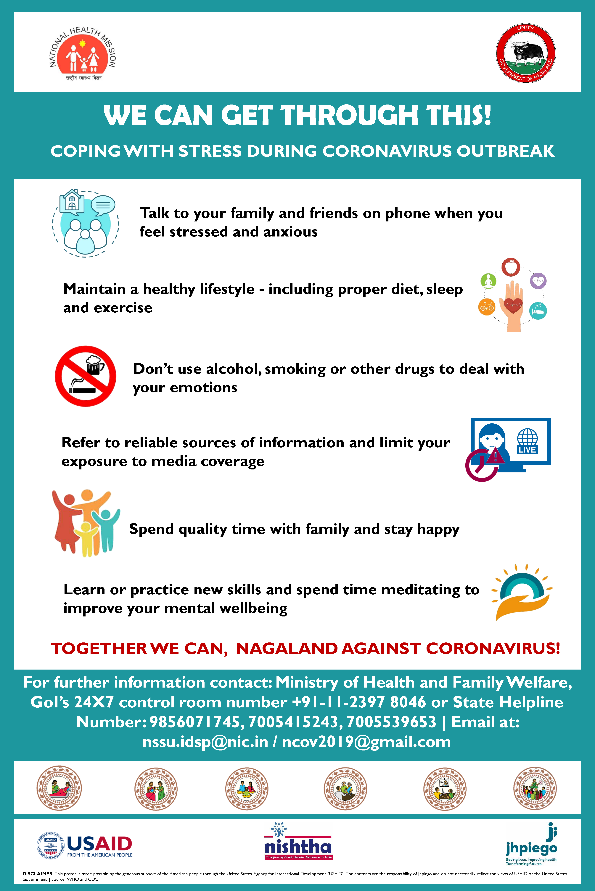India
- History
- Our Work
- Transforming Development Through Innovation & Partnership
- U.S.-India Triangular Cooperation
- Partnership for Energy Access and Security
- Partnership for Sustainable Forests in India
- Partnerships for Health
- Partnership for Education
- Partnership for Water Sanitation and Hygiene (WASH)
- Partnership for Food Security
- Partnership for Gender Equality
- Investing in Afghanistan
- Foreign Assistance Data
- Newsroom
- Newsletters and Fact Sheets
- Speeches
- Resources For Implementing Partners (RFIP)
- Careers
- Partnership Opportunities
- Success Stories
Speeches Shim

These days, Dr. Thanghoi Lam, the State Program Officer for Health and Wellness Centers in Nagaland, a small and remote state in northeastern India, barely leaves his office. The fear and panic surrounding COVID-19 has recently taken hold in Nagaland and Dr. Lam wants to make sure the state is fully equipped to deal with the pandemic.
“In Nagaland, we are taking all the necessary steps to prevent the rapid spread of this disease and minimize deaths. It is important that we strictly follow and implement all the guidelines issued by the Government of India and ensure that our public abides by them,” says Dr. Lam, who oversees health workers in the state.
However, Nagaland is a mountainous state with poor roads and inadequate resource allocation. With COVID-19 restrictions on movement in place across the state and limited funding available, the state was unable to provide much-needed training on COVID-19 for its Community Health Officers (CHOs) posted at Health and Wellness Centers across the state. India’s Health and Wellness Centers, which each serve populations of 5,000 people, provide comprehensive primary health care services under the country’s Ayushman Bharat universal health coverage plan, and their health workers are on the frontlines in the fight to prevent the spread of COVID-19.
To help reach CHOs in Nagaland with accurate and timely information on COVID-19, the USAID-funded health systems strengthening NISHTHA project, implemented by Jhpiego, developed a Learning Resource Package (LRP) that is being used to train health workers all over the state. NISHTHA used virtual learning platforms to provide workers in far-flung areas with standardized information on the pandemic, dispel myths, and ensure effective information dissemination to remote communities. The project also helped the state design, print, and distribute communications materials to raise community awareness and provide information on how to prevent the spread of COVID-19.
Thanking USAID’s NISHTHA project for ensuring that the CHOs were able to access training, Dr. Lam noted, “This training is very useful: CHOs get accurate information from reliable sources so they can do their jobs well. Best of all, it has boosted their morale, which will really help us in preventing the spread of this disease.”
In addition to his work on the COVID-19 response, Dr. Lam must continue to manage existing health programs in a state with many needs. “If we stop delivering babies for rural women or feeding poor children, what will happen to them? We have to act fast and we all have to do our part,” he explains. He tries to strike a balance, continuing his routine work with a constant eye on the pandemic. Wherever possible, he has health workers integrate messages on COVID-19 prevention as they deliver babies, provide immunization, or manage chronic conditions in their patients.
As Nagaland braces itself for the unforeseen, Dr. Lam is leading the state’s health response with a compassionate and welcome voice. “It’s true that now is a difficult time. But one cannot run away from their duties. We are all very alert and working day in and out to stop the spread of COVID-19 in Nagaland, and we are also running our other health programs.” He pauses and says “If not now, when? If not me, then who?”

Comment
Make a general inquiry or suggest an improvement.